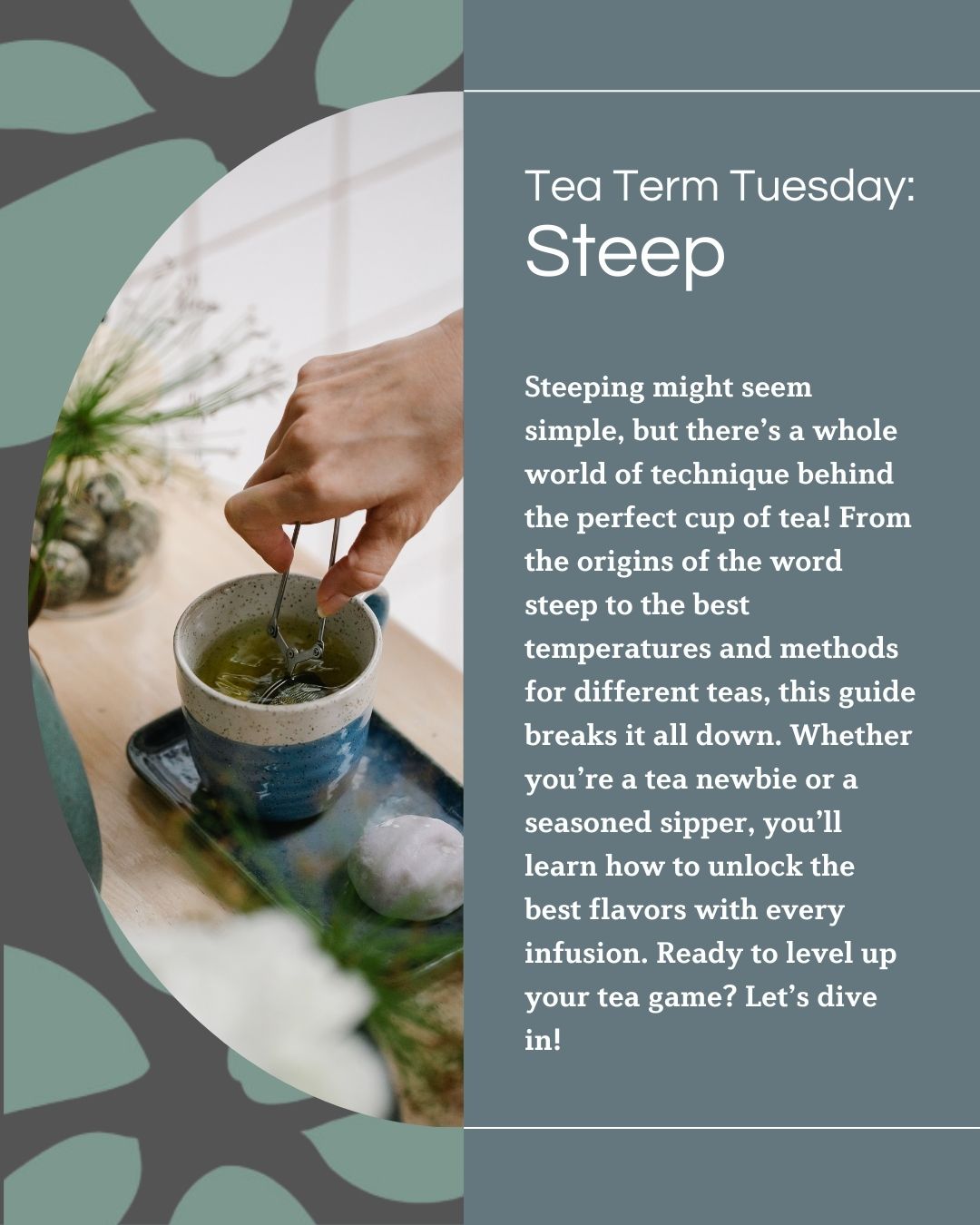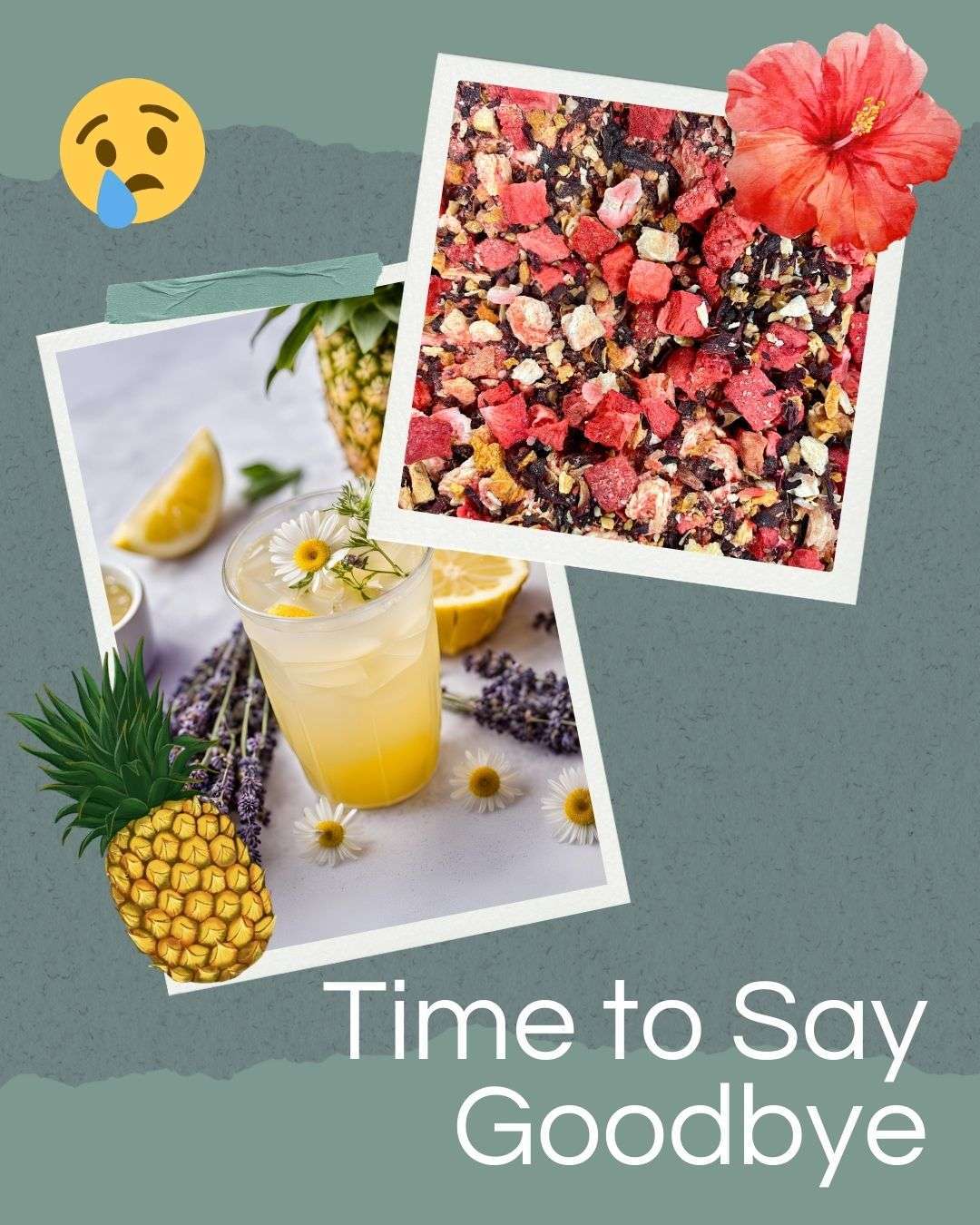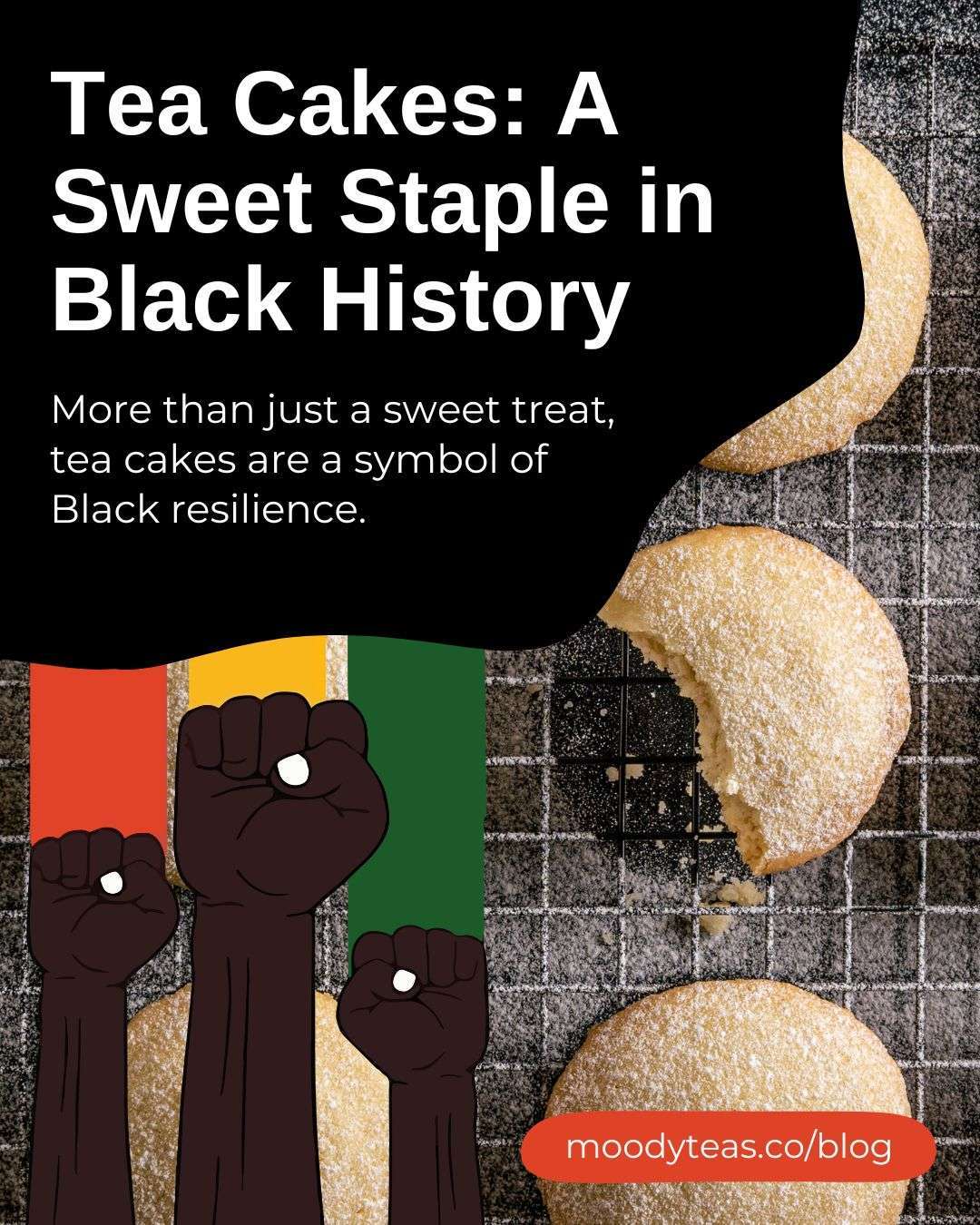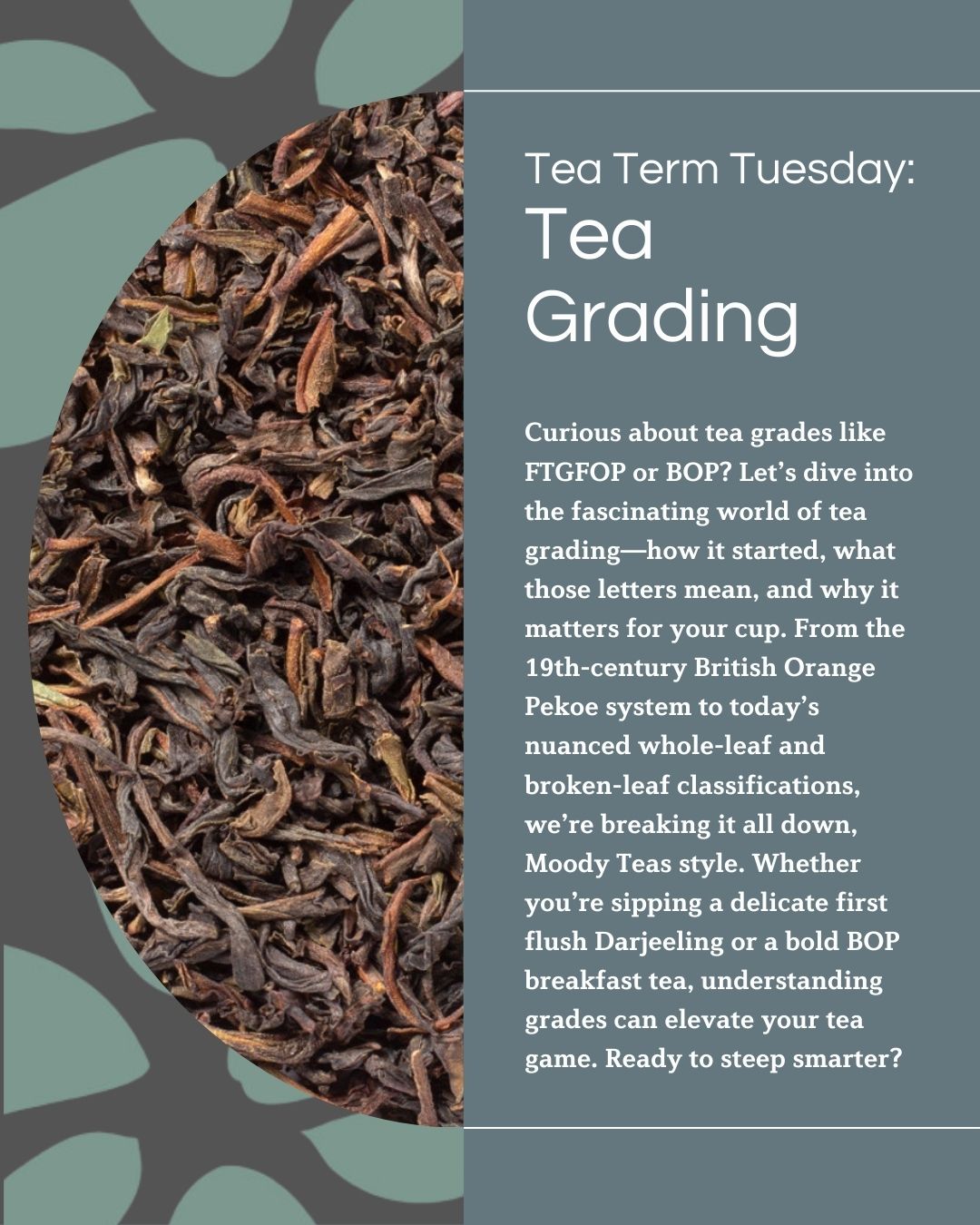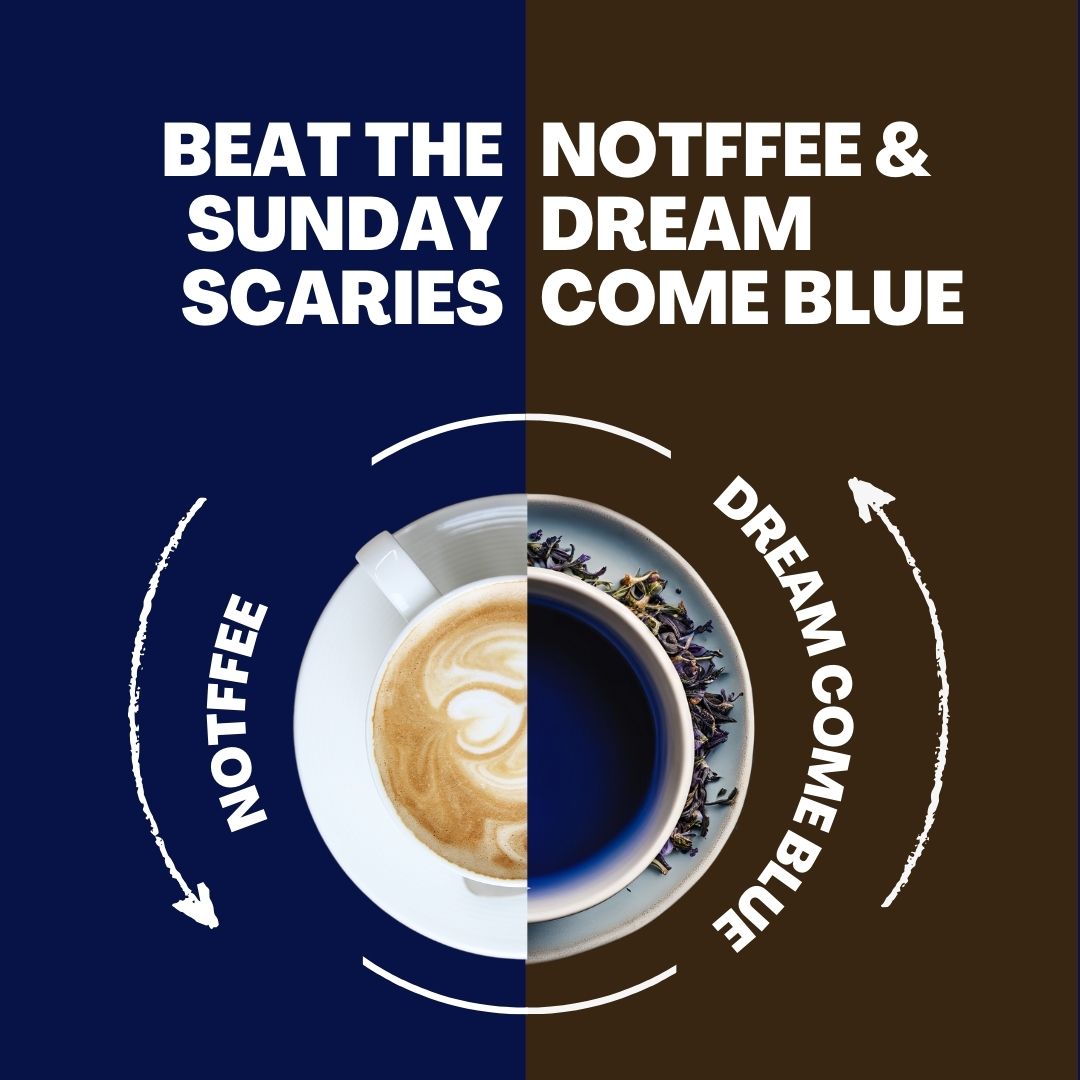Steeping: it’s what transforms dried leaves into the comforting, flavorful cup of tea you love. But have you ever stopped to wonder where the word “steep” comes from? Or what makes steeping different from brewing? This Tea Term Tuesday, let’s dive into the world of steeping and make sure you’re getting the best out of your tea.
The Origins of “Steep”
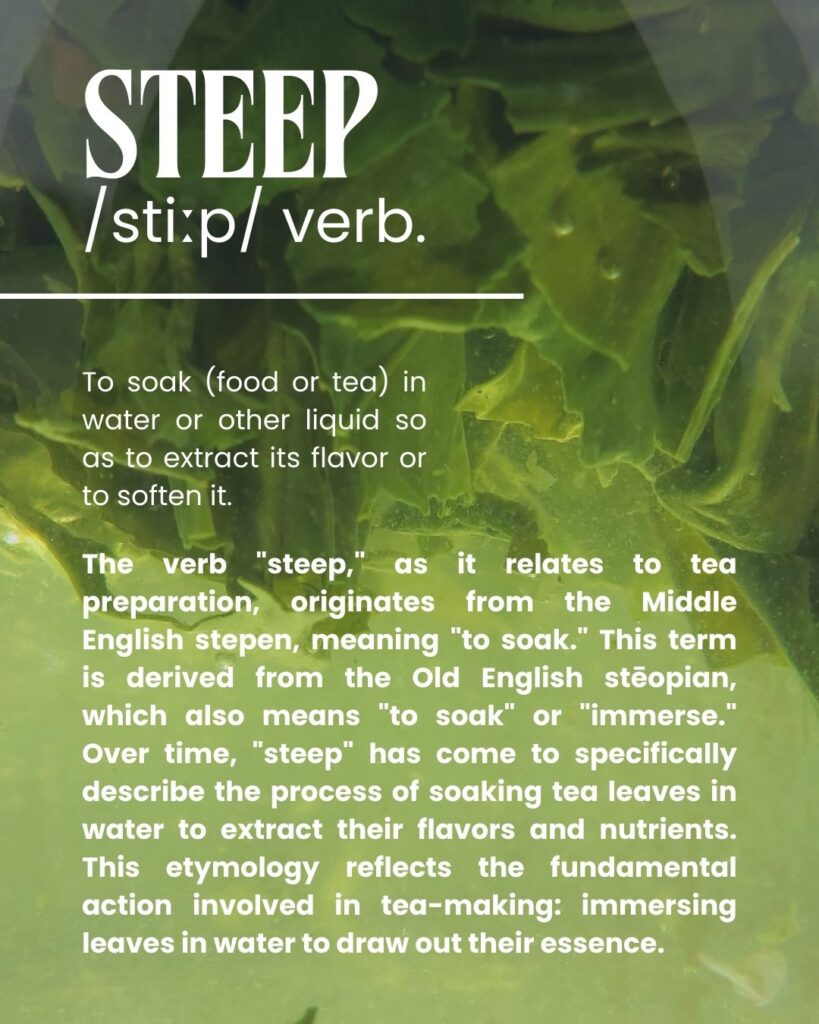
The word steep comes from the Old English stéopian, which means to soak or immerse in liquid. Over time, the term evolved to specifically refer to the process of extracting flavors, colors, and nutrients from solids—like tea leaves—by soaking them in hot water. Interestingly, “steep” is also related to words in other languages that convey soaking or saturating, such as the Dutch stijpen and the German steifen.
Beyond tea, “steep” appears in various contexts. We use it metaphorically in phrases like “steeped in tradition,” meaning something is deeply immersed in or influenced by tradition. The word also appears in geography, describing a steep incline or a high gradient, which interestingly connects to the process of tea-making—where flavors quickly “rise” from the leaves into the water.
Steeping vs. Brewing: What’s the Difference?
These two terms are often used interchangeably, but they have slightly different meanings. Steeping refers specifically to the act of soaking tea leaves in water to extract flavors, aromas, and beneficial compounds. It’s a passive process that allows water to interact with the leaves, gently drawing out their essence. Brewing, on the other hand, is a broader term used for preparing beverages like coffee, beer, and tea. Brewing often involves a more active process, such as boiling, pressing, or agitation to extract flavor. In the world of tea, we typically use “steeping” because it highlights the gentle, infusion-based method used to unlock the full depth of tea’s character without excessive force or mechanical extraction.
The Art of Steeping: Time, Temperature, and Technique
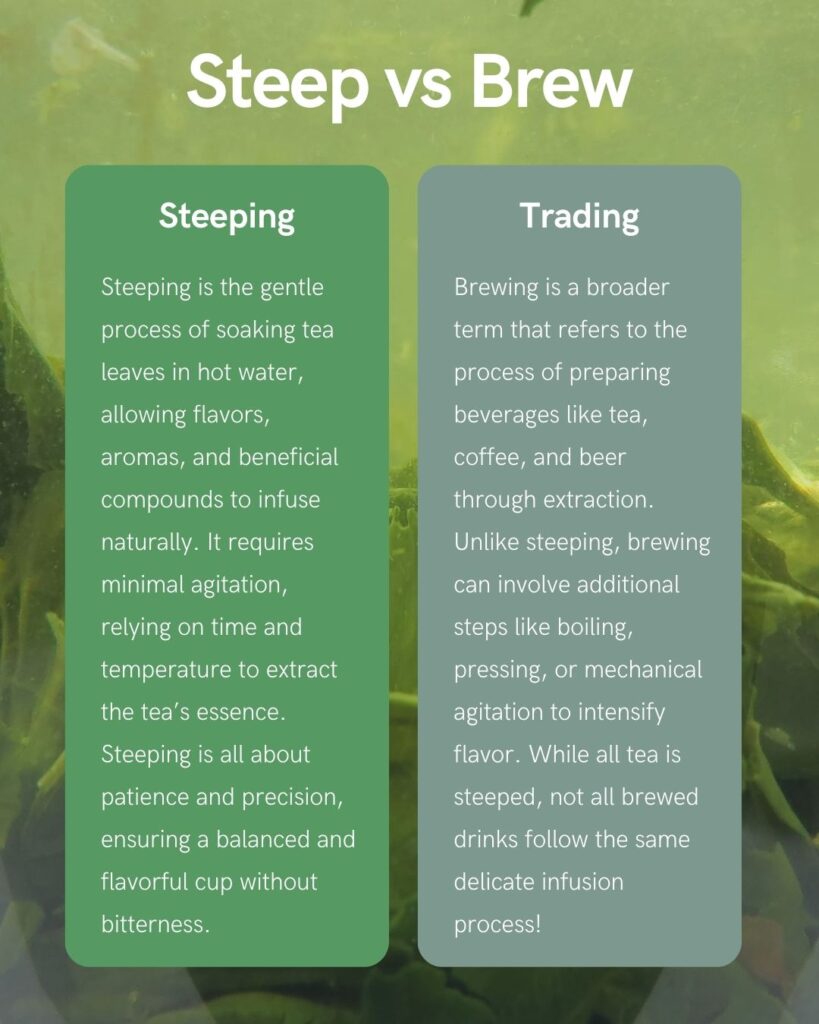
Every type of tea has its own steeping needs to bring out the best flavors while avoiding bitterness or weak infusions.
Black tea should be steeped in water heated to 200-212°F for about 3-5 minutes. This ensures a bold, full-bodied flavor. A longer steeping time extracts stronger tannins, creating a more robust taste, but steeping too long can lead to bitterness. Black tea is perfect for those who enjoy a strong morning cup with rich depth.
Green tea requires more delicate handling, with water temperatures between 160-180°F and a steeping time of just 1-3 minutes. Steeping too long or using water that is too hot can make green tea taste overly bitter. A shorter steep keeps the flavor light and fresh. Many high-quality green teas are suitable for multiple infusions, allowing different layers of flavor to emerge with each steep.
White tea is the most delicate of all and benefits from slightly lower temperatures, between 170-185°F, with a steeping time of 3-5 minutes. White tea leaves are minimally processed, and a gentle steeping method enhances their natural sweetness and subtle floral notes. Since white tea is light, it can be steeped multiple times to enjoy its evolving flavors.
Oolong tea offers a rich complexity that develops beautifully with multiple infusions. It should be steeped at temperatures ranging from 180-200°F for about 3-5 minutes. With each subsequent steep, new flavors unfold, making oolong an excellent tea for those who appreciate variety in their cup.
Herbal and rooibos teas, being caffeine-free, allow for a longer steeping time of 5-7 minutes at boiling temperatures (200-212°F). Since these teas do not contain tannins, they don’t become bitter with extended steeping, so they can be left to infuse as long as desired for a stronger flavor.
Steeping Methods: Traditional and Modern Approaches
There are several ways to steep tea, each offering unique benefits and experiences:
- Gongfu Style
A traditional Chinese method that uses a high leaf-to-water ratio in a small teapot or gaiwan. It involves multiple short steeps (often 10-30 seconds each), allowing the flavors to evolve over time. This method is excellent for oolong, pu-erh, and fine green or black teas.
- Western Style
The most common steeping method, often using a teapot or infuser with a moderate amount of tea leaves and longer steeping times. This style balances convenience with a full-bodied infusion and works well for most tea types.
A casual, no-fuss approach where loose leaves are placed directly into a cup, and hot water is added. The tea is sipped while the leaves remain in the cup, with additional water added as needed. This works well for robust teas like pu-erh and some green teas.
A refreshing way to prepare tea by steeping leaves in cold or room-temperature water for several hours (usually 4-12 hours). This method extracts different flavors, often resulting in a smoother, sweeter tea with less bitterness.
Steeping Multiple Times: Unlocking Layers of Flavor
Many high-quality loose-leaf teas can be steeped multiple times, with each infusion revealing new flavors and aromas. This is especially true for teas like oolong, pu-erh, and high-end green and white teas. Here’s how to get the most out of your multiple steeps:
- Increase steeping time slightly with each infusion. Your first steep might be 1-2 minutes, but the second could be 3-4 minutes, and so on.
- Use high-quality loose leaf tea. Tea bags generally don’t hold up well to multiple steeps.
- Adjust water temperature based on the tea type. Some teas, like oolong, release new layers of flavor when steeped at slightly different temperatures in subsequent infusions.
Maximizing Your Steeping Experience
Here are a few extra steeping tips to level up your tea game:
- Use fresh, filtered water for the best taste—hard water can dull delicate flavors.
- Don’t squeeze the tea bag or leaves—this can release extra tannins and lead to bitterness.
- Experiment with re-steeping—many high-quality loose leaf teas can be steeped multiple times, revealing different flavor notes with each infusion.
- Give your leaves room! If you’re using an infuser, make sure there’s space for the leaves to expand and fully infuse their goodness.
- Cover your cup or teapot while steeping. This helps retain heat and ensures even extraction.
Steeping isn’t just a process—it’s an experience. Whether you love a strong black tea to wake you up or a delicate white tea for a moment of calm, getting the steeping time and temperature right can make all the difference. Plus, experimenting with multiple infusions can help you unlock new dimensions of flavor in your favorite teas.
What’s your go-to steeping method? Let us know in the comments below!

